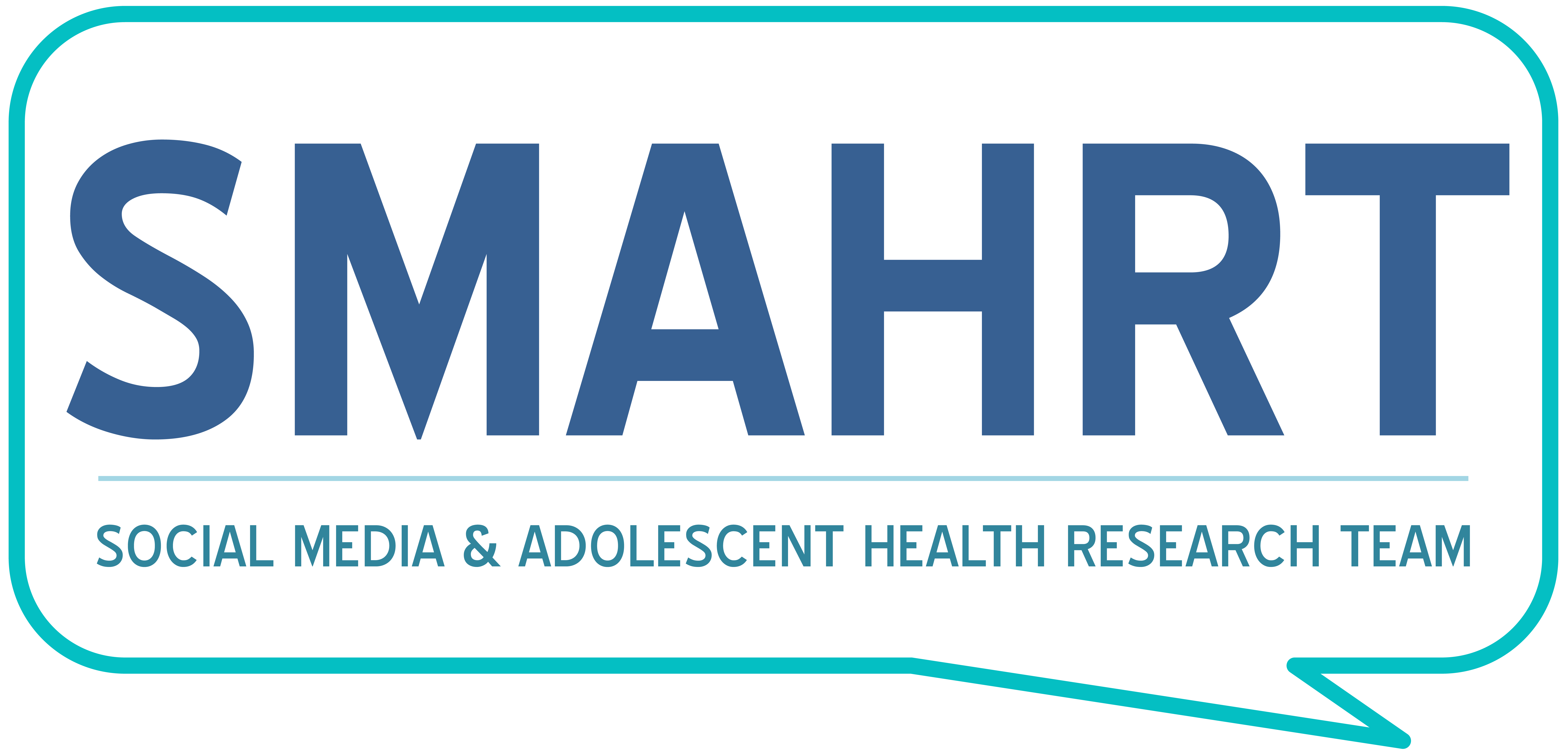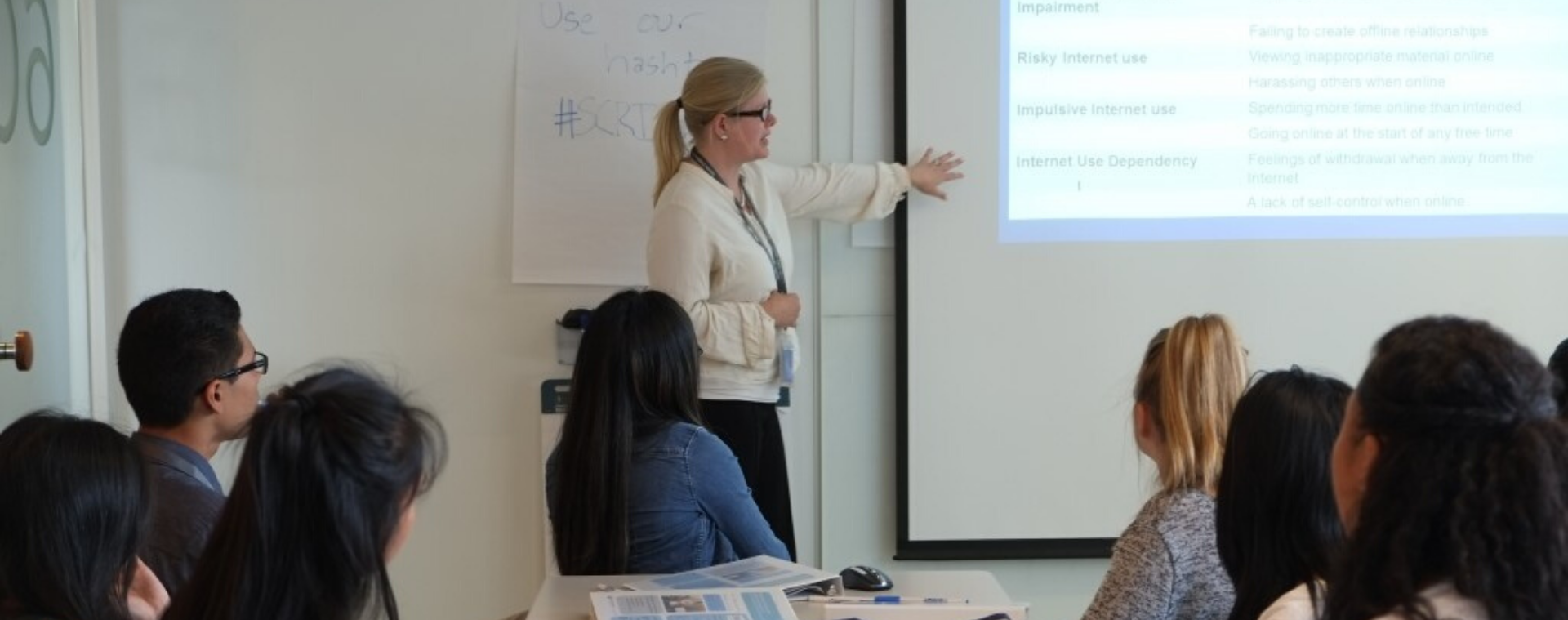
As a social media research team, we understand the conundrum that technology brings to everyday life, especially for parents and adolescents. Parents commonly ask us about their child’s media use. Should they limit it? Is it bad for their health? Can it be beneficial to their health?
Here’s what we know. Social media isn’t inherently good or bad for your health. What matters is not only how long you use technology each day, but what you are doing on it. Media use has been linked to improved social connection and enhanced creativity. Problematic and excessive media use has been linked to negative health consequences, such as poor sleep, lower physical activity, and worsened mental health.
To protect against some of those negative consequences the AAP released the Family Media Use Plan, a set of media guidelines to help parents communicate with their teens about technology, and create their own guidelines, priorities and rules at home. To date, the AAP’s media guidelines have not been researched.
We sought to further understand the impact the Family Media Use Plan could have on adolescent’s technology use. This recent JAMA Pediatrics study enrolled over 1500 parent-teen dyads. The participants first took an online survey asking about media rules, technology importance and interactions, as well as health outcomes of sleep, physical activity and depression.
Then a randomly selected half of the participants completed a Family Media Use Plan together, as parent and child.
Two months later, the same surveys were given to both groups.
What we found from this study is that teens who were in the group that completed the media guidelines were more likely to say that technology had decreased importance, compared to teens who did not do a Family Media Use Plan. We did not find any key differences in the groups regarding media rules, sleep, physical activity or depression.
We concluded that the AAP’s media guidelines may be as much about the process of parents and teens talking about media use, discussing what’s important to them in technology as well as life, as the actual set of rules they agree on. Parents can feel agency in having these communications and valuing their teen’s input on their own technology use.
This study was completed in 2019. We understand that the world we live in now has been drastically impacted by the COVID-19 pandemic.
With the pandemic, most teens retreated to their homes, no longer going to school and afterschool activities. This left many people, children included, to spend more time on screens and online. The concerns we have heard from parents in the past about their child’s media use are more heightened than ever.
Here are some things to consider as a family:
- Creating lots of media rules might not be for everyone
The Family Media Use Plan can be a helpful tool when creating media rules to follow as a family. However, it is important to remember that we are all operating under very stressful circumstances right now. This means that for some families it might be difficult to follow the established rules consistently, and that’s ok. Ongoing communication about what is working and what is not is as important as establishing concrete rules.
2. Have open discussions with your child about their media use
Another way to mitigate the negative consequences of media use is by having an ongoing and open dialogue with your child about their media use. These could be questions such as: what do they enjoy doing online? What are they just doing to pass the time? What are some screen-free activities they could do to take a break from media when they get bored?
Recently, we developed a tool to understand adolescents’ technology interactions and perceived importance called the Adolescents’ Digital Technology Interactions and Importance Scale (ADTI). We wanted to understand what adolescents were doing on their technology that was important to them and we recommend that parents have this conversation with their child as well.
3. Try out a couple of evidence-based rules that have been proved to impact health
Previous research suggests that the following rules can impact the health of your child:
- No phones at the dinner table
- No phone use overnight
More recommendations can be found in the National Geographic’s article, How to keep your kid digitally healthy.
4. Reflect on your own media use at home
We know that we are all spending more time with technology these days and we also know that children model the behavior of the adults they look up to in their lives. Parents can try to be aware of when and how they are using their own technology use and can even try to follow the media rules put in place for their child.
5. Co-view media together as a family
In the Media Use in School-Aged Children and Adolescents policy statement, the American Academy of Pediatrics (AAP) has recommended that co-viewing media with your child can be used to learn, be creative, and share these experiences with their community.
6. Talk to your pediatrician about any concerns
There is research to suggest that a child’s excessive use of media could potentially lead to negative health consequences. If their media use is impacting their functionality, such as withdrawing socially or refusing to leave video games for family time or missing school, then it is time to talk with your pediatrician to ensure they are doing ok and have any additional resources they need.
References:
Moreno MA, Binger KS, Zhao Q, Eickhoff JC. Effect of a Family Media Use Plan on Media Rule Engagement Among Adolescents: A Randomized Clinical Trial. JAMA Pediatr. Published online January 25, 2021. doi:10.1001/jamapediatrics.2020.5629

